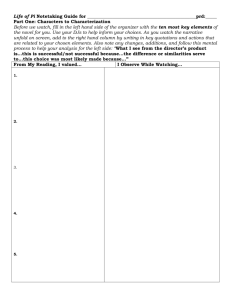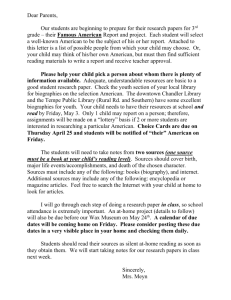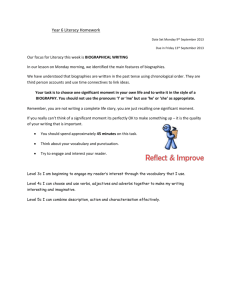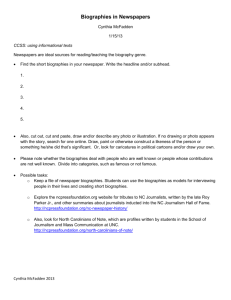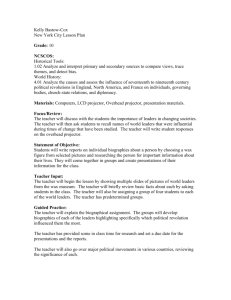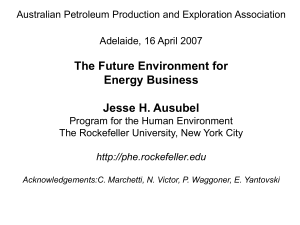Amy Conroy EDGR 5125 Assignment 8.doc
advertisement
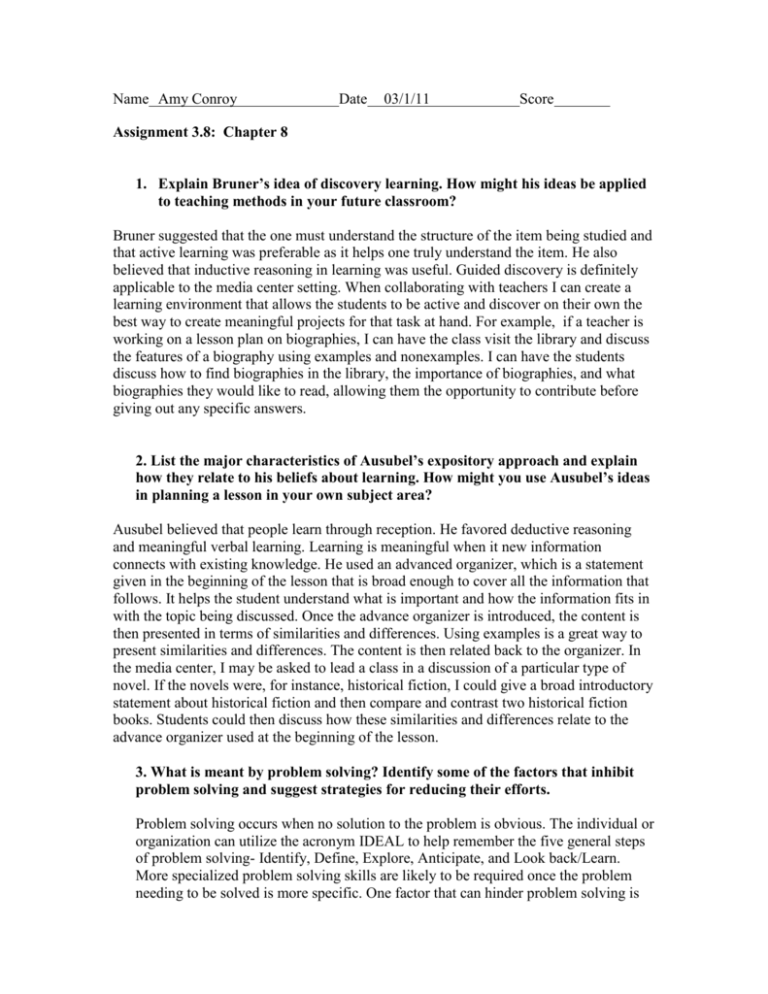
Name Amy Conroy Date 03/1/11 Score Assignment 3.8: Chapter 8 1. Explain Bruner’s idea of discovery learning. How might his ideas be applied to teaching methods in your future classroom? Bruner suggested that the one must understand the structure of the item being studied and that active learning was preferable as it helps one truly understand the item. He also believed that inductive reasoning in learning was useful. Guided discovery is definitely applicable to the media center setting. When collaborating with teachers I can create a learning environment that allows the students to be active and discover on their own the best way to create meaningful projects for that task at hand. For example, if a teacher is working on a lesson plan on biographies, I can have the class visit the library and discuss the features of a biography using examples and nonexamples. I can have the students discuss how to find biographies in the library, the importance of biographies, and what biographies they would like to read, allowing them the opportunity to contribute before giving out any specific answers. 2. List the major characteristics of Ausubel’s expository approach and explain how they relate to his beliefs about learning. How might you use Ausubel’s ideas in planning a lesson in your own subject area? Ausubel believed that people learn through reception. He favored deductive reasoning and meaningful verbal learning. Learning is meaningful when it new information connects with existing knowledge. He used an advanced organizer, which is a statement given in the beginning of the lesson that is broad enough to cover all the information that follows. It helps the student understand what is important and how the information fits in with the topic being discussed. Once the advance organizer is introduced, the content is then presented in terms of similarities and differences. Using examples is a great way to present similarities and differences. The content is then related back to the organizer. In the media center, I may be asked to lead a class in a discussion of a particular type of novel. If the novels were, for instance, historical fiction, I could give a broad introductory statement about historical fiction and then compare and contrast two historical fiction books. Students could then discuss how these similarities and differences relate to the advance organizer used at the beginning of the lesson. 3. What is meant by problem solving? Identify some of the factors that inhibit problem solving and suggest strategies for reducing their efforts. Problem solving occurs when no solution to the problem is obvious. The individual or organization can utilize the acronym IDEAL to help remember the five general steps of problem solving- Identify, Define, Explore, Anticipate, and Look back/Learn. More specialized problem solving skills are likely to be required once the problem needing to be solved is more specific. One factor that can hinder problem solving is forgetting to look outside the box. It is easy to become fixated on a material, believing it only has one purpose or believing that there is only one solution to the problem at hand. One can also be biased in how they think the problem should be solved based on their own beliefs. It is important to encourage students to look at problems from all angles and encourage discussion of different possible solutions. Help students become aware of the assumptions they are making as it will help open their minds to new ways of solving problems. 4. Define the different types of transfer and create new examples of each. Low road transfer occurs when one is able to apply frequently practiced skills automatically without much thought. There is little reflective thinking involved. An example of this would be riding a bike. When child first rides a car, he or she must think about every action and adjusting to a new bike would take time. As he or she becomes more experienced, there is little reflective thought when it comes to getting on the bike and riding around. There would be little reflective thought getting on someone else's bike as well. High road transfer is when an individual uses abstract knowledge learned in one situation and applies it to another situation. An example of high road transfer could be a media specialist applying information from a web design class to creating a media center blog for the school on the school website.

